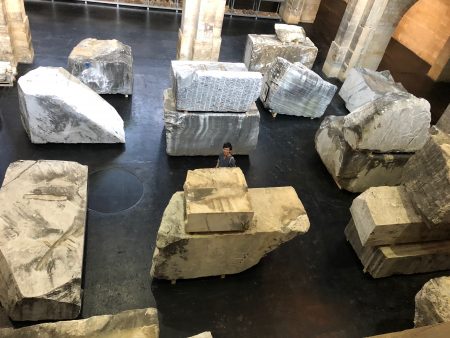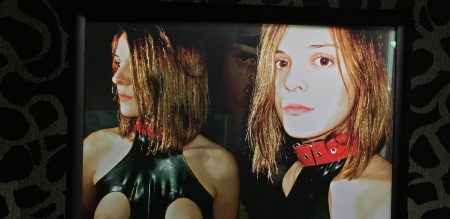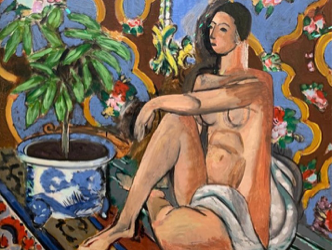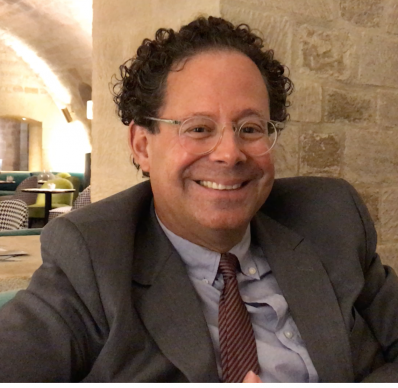Vintage or not
In photography, from the moment images become a part of history they are divided by specialists into two kinds of prints. There are those that were made around the time the photograph was taken – these are called vintage prints and they are particularly highly prized – and those that were made later, according to the needs of the photographer and the level of demand, often using different formats and types of paper, which are considered to be a “product” of inferior quality. But it’s not actually that simple, because Henri Cartier-Bresson, for example, rejected the importance of vintage prints, in direct opposition to some of the most qualified among his collectors.
Man Ray photographer
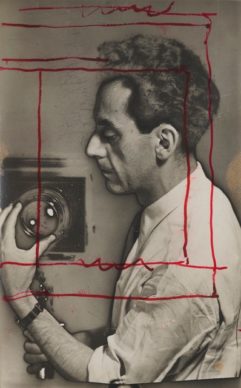
The American artist Emmanuel Radnitsky, otherwise known as Man Ray (1890-1976), who spent much of his life in France from 1921 onwards, first tried to be a painter before being encouraged by Francis Picabia to earn a living as a portrait photographer. He moved in avant-garde circles in Montparnasse, producing portraits of the intelligentsia alongside many advertising commissions, which were recently displayed as part of an exhibition in Marseille and later at the Musée du Luxembourg in Paris entitled “Man Ray et la mode” (Man Ray and Fashion).
I hate photography
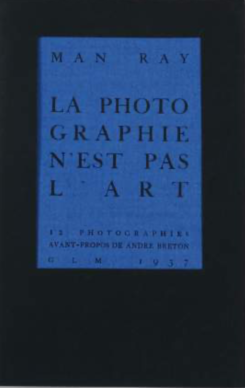
Man Ray
The curator of the exhibition, Alain Sayag, explains in the catalogue that Ray’s career in society and fashion photography only lasted 18 years. Man Ray said, “I hate photography. I only do what is necessary for me to survive in order to produce something that interests me personally.”
Genius of experimentation
He was able to make a rather comfortable living from photography in the 1930s before abandoning the discipline to dedicate himself fully to the surrealist spirit, to imaginary objects. But in the 1960s, most likely due to lack of funds, he once again revisited and promoted his photography from the 1920s and ’30s. His first retrospective took place in 1966 at the Los Angeles County Museum. Unusual viewpoints, unique framing, double exposure, solarization… Man Ray was a genius of experimentation who influenced numerous photographers, including figures like Robert Mapplethorpe among others.
Lucien Treillard
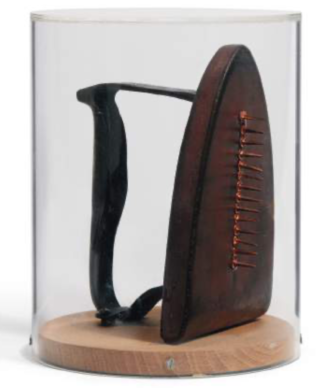
On 2 March 2021 Christie’s is auctioning in Paris the collection of Lucien and Edmonde Treillard. Lucien Treillard (1936-2004) was Man Ray’s assistant for a little over 15 years and after the artist’s death Treillard also assisted Juliet Man Ray, his wife, in managing his estate and promotion. Today it is Edmonde, his widow, who is putting a collection of 188 lots up for sale comprising photos and various artworks, including several sculptures, with a total estimate of 1.8 million euros.
Emmanuelle de l’Ecotais
She is advised in this by Emmanuelle de l’Ecotais, who was in charge of the Man Ray collection at the Centre Pompidou on the occasion of the institution’s receipt of around 15,000 of the artist’s negatives, among other things. Today Emmanuelle de l’Ecotais is a photography expert.
Questions about the sale
At this point in time, several professionals in the photography industry are questioning the sale. However, none of them wish to appear openly. Similarly, there’s a number of specialist curators who don’t want to talk. We contacted Alain Sayag as well as Clément Chéroux, a former curator of photography at the Centre Pompidou who is now at Moma. Neither responded to our requests for an interview.
Silence of the specialists

Nor did renowned dealer Timothy Baum, a surrealism specialist in New York, or Steven Manford, an art historian based in Toronto known for his views which are anti Lucien Treillard, who says “For the moment I cannot speak about the auction.” Marcel Fleiss of the 1900-2000 gallery in Paris, who was particularly close to Man Ray and later Lucien Treillard, states: “Lucien Treillard had the complete confidence of Man Ray and for my first Man Ray exhibition in February 1972 it was Lucien Treillard who took care of everything.”
Two camps
A dealer sums up the current situation: “Today there are two camps in the field of photography: those who are for and against Treillard.” The questions being asked about this collection are concerned with the origin of the artworks: whether they were bought, gifted, or other… and the dating of the photographs, which defines them as vintage prints or not.
The stamps on the back
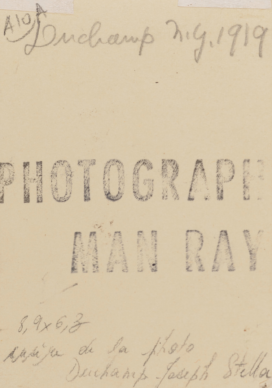
The main dating criteria are the stamps on the back of the photographs. Whenever Man Ray moved house he would have a new stamp made up with a new address. According to Emmanuelle de l’Ecotais there were six different stamps. “Did Man Ray put several stamps from different periods on identical works? Yes!” observes the expert. Moreover, regarding the issue of research conducted by Steven Manford on the stamps, she explains: “He only looked at the stamps, not at the images on which they had been placed.”
Working for nearly 20 years
As for the question of how Lucien Treillard acquired the works, she offers the justification: “When you work with someone for nearly 20 years, you’re bound to have some of their works in your possession.”
The market of Man Ray

In any event, this trench warfare doesn’t do any favours for the market for Man Ray, who is nonetheless an undeniable star in the field of modern photography. According to Artprice, his record price at auction dates from 2017 when “Noire et blanche”, a vintage print from the 1920s, sold for 2.6 million euros. It depicts the face of Kiki de Montparnasse posing like a sculpture next to an African mask.
2 versions of the catalogue
Christie’s is presenting two versions of the catalogue for the sale on 2 March. One is online and also lists the backs of the photos with the stamps visible. The other is a PDF in which the stamps do not feature.
Erotique voilée
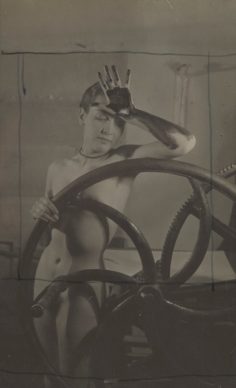
One of the stars of the sale (estimated at 50,000 euros) is “Erotique voilée” from 1933, 9 prints in a very small format which depict the process of the creation of one of the iconic images of the 20th century. It shows the surrealist artist Meret Oppenheim, nude, alongside the mechanisms of a printing press. A self-portrait of Man Ray from 1931, marked in red to show the reframing the artist would apply to the image, is estimated at 15,000 euros.
Objects by Man Ray
Man Ray also made objects. These are the subject of less controversy in this sale since they have been approved by Andrew Strauss, who is the co-author of the forthcoming catalogue raisonné of the objects. “He explored sculpture in the form of objects from as early as 1917, when he was living in New York with members of the Dada movement,” explains Strauss. “He produced around 150 pieces.”
A quoi rêvent les jeunes
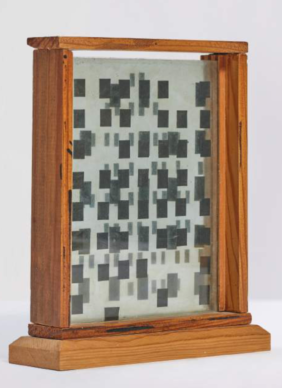
For Antoine Lebouteiller, an expert at Christie’s, “Man Ray issued these pieces in considerable numbers from the 1950s onwards. But the market remains undervalued.” The most expensive artwork in this category is “A quoi rêvent les jeunes…”, a little-known object from 1935, a small glass case marked with geometric motifs, linked to a quote by Alfred de Musset, “A quoi rêvent les jeunes filles”. Then there’s the wood and glass case from the late 1960s containing three peaches against a background of white cotton wool, which has the surrealist title “Les trois péchés” (the title is a pun in the French on “pêche” meaning “peach” and “péché” meaning “sin”) estimated at 20,000 euros.
Extraordinary testimony
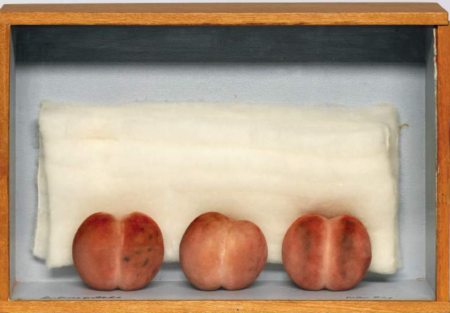
Beyond the controversy stirred up by the sale, it should be pointed out that this is an extraordinary testimony of a period of great creative effervescence in the surrealist circles in Paris.
Heinz Berggruen
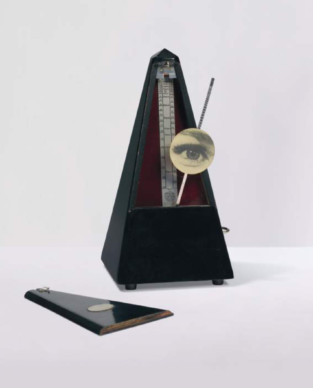
Heinz Berggruen, famous for being Picasso’s last dealer, writes in his book “J’étais mon meilleur client” that “Man Ray had no head for business. Over time his celebrity naturally increased but materially he barely profited.”
This disregard for the organization of his oeuvre still has consequences for the market for his works today.
Heinz Berggruen concludes his passage on Man Ray by saying: “When he died in Paris, in 1976, there were scarcely more than eight or nine of us accompanying him to his final resting place at the Montparnasse Cemetery.”
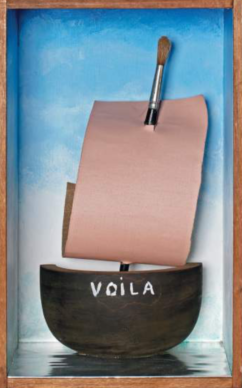
Support independent news on art.
Your contribution : Make a monthly commitment to support JB Reports or a one off contribution as and when you feel like it. Choose the option that suits you best.
Need to cancel a recurring donation? Please go here.
The donation is considered to be a subscription for a fee set by the donor and for a duration also set by the donor.

